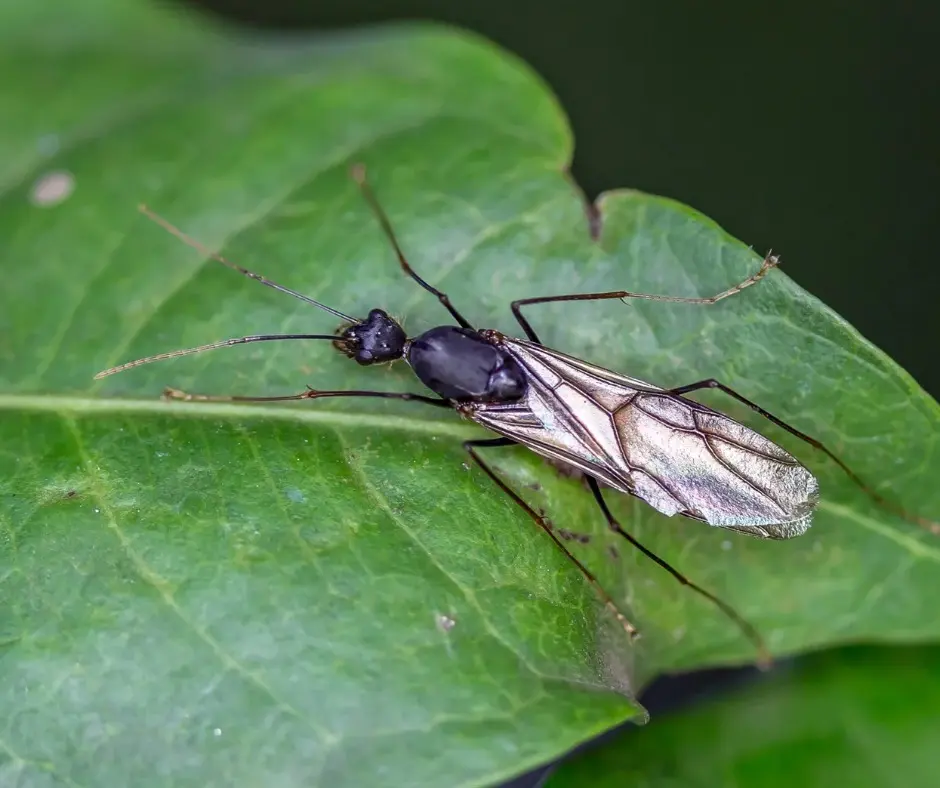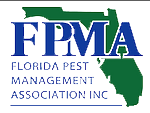Introduction to Flying Ants in Florida
Every summer, Florida faces a buzzing phenomenon known as flying ant season. But what exactly are flying ants? They’re simply regular ants that grow wings for a short period during their mating phase, known as the nuptial flight. This is when male and female ants fly out of their colonies to mate, with the females eventually losing their wings to start new colonies. In Florida, the warm climate provides a perfect backdrop for these ants to thrive, especially after a rain when the humidity levels spike. It’s common to see them in swarms, which can be startling but is a natural part of their life cycle. Despite their intimidating appearance, flying ants are not typically harmful to humans or structures. However, seeing an abundance of them could indicate a larger ant colony nearby.
Identifying Flying Ants: Features to Look For
Spotting flying ants isn’t hard if you know what to look for. These critters are often mistaken for termites, a costly error. Here’s the rundown on identifying them: First, check the waist. Flying ants sport a pinched waist, unlike termites that have a more uniform body shape. Next up, wings. Flying ants have two pairs of wings with the front pair being larger than the back pair. Termites’ wings? They’re all the same size. Lastly, take a gander at the antennae. Ants flaunt a bent or elbowed antennae, while termites’ antennae are straight. Remember, seeing these flying ants around doesn’t always mean trouble, but keeping an eye out for sudden swarms is wise, especially during their mating season in Florida.
The Life Cycle of Flying Ants
Flying ants don’t just show up out of nowhere. They start the same way all ants do. First, there’s an egg. These eggs hatch into larvae, which are basically baby ants that can’t do much. They rely on the worker ants to feed and take care of them. Once they’ve eaten enough, they enter the pupa stage. Think of it as a cocoon stage for ants. It’s here they transform, and when they emerge, they’re adult ants. Some of these adults turn into the flying ants we see, but not all of them. Flying ants are future queens and males whose main job is to start new colonies. Once they fly off, mate, the cycle begins anew – with the queen laying eggs.
Common Types of Flying Ants Found in Florida
In Florida, the sight of flying ants is not uncommon, especially during certain times of the year. Common types include the Carpenter ant, known for its large size and black color. These ants are often spotted around wooden structures, as they’re known to make their homes in wood. Another usual suspect is the Fire ant. While not always seen flying, their winged versions emerge when it’s time to mate. Fire ants are reddish in color and known for their painful sting. Lastly, the Florida Carpenter ant, specifically Camponotus floridanus, is prevalent throughout the state. They are distinguished by their black and reddish coloration. Despite their different living habits and appearances, what these ants have in common is their ability to fly during mating seasons, a sight that might surprise some but is a natural part of their lifecycle.
Why Do Flying Ants Swarm?
Flying ants swarm for one main reason: to mate. Think of it as their big day out. Typically, this swarming happens on warm, calm days after recent rain. Here’s the scene – the queen and the male ants, equipped with wings, leave their nest to take flight. This event is called the nuptial flight or, simply, ant mating season. The goal? For queens to mate and start new colonies. Once the queen has mated, she lands, loses her wings, and starts her new empire underground or in some cozy wood nook. So, when you see a swarm of flying ants, you’re witnessing a crucial step in the life cycle of ants. It ensures their survival and the spread of their colonies.
When Do Flying Ants Appear in Florida?
Flying ants in Florida make their grand appearance mostly during the warmer months, especially after a period of rain. If you’re wondering when to expect these winged insects, pay close attention to the weather patterns from spring through late summer. Often, their swarming – which marks the start of their mating season – can happen anytime from March to July. This is when they are most visible as they’re out and about, searching for mates. The exact timing can vary slightly each year, driven by the region’s climate and the specific ant species. So, don’t be surprised if you start noticing them right after a heavy rain when the ground is wet, and the air is humid. It’s their ideal time to come out and play. Keep an eye on these conditions if you’re trying to anticipate their arrival.
How to Differentiate Between Flying Ants and Termites
Seeing flying insects around your Florida home can be worrying. You might wonder, are these flying ants or termites? It’s crucial to tell them apart since termites can cause serious damage to your home. Let’s simplify how you can spot the difference. Flying ants have a narrow waist, which termites do not. Ants’ wings are different sizes while termites have wings of the same size. Another giveaway is their antennae; flying ants have elbowed antennae, whereas termite antennae are straight. Pay close attention next time these flyers visit. Identifying them correctly could save you a lot of hassle and money.
Managing Flying Ants: Prevention and Control
To keep flying ants away, it’s crucial to cut off their entry points and eliminate what attracts them. First, ensure your home is well-sealed; check windows, doors, and foundations for gaps. Seal any cracks with caulk to prevent their entry. Next, cleanliness is key. Flying ants are drawn to food. Make it a habit to clean up crumbs and spills immediately, store food in airtight containers, and keep trash cans sealed and taken out regularly. Also, reduce standing water around your home because it’s a breeding ground for ants. Fix leaky faucets and ensure gutters and downspouts are clear to avoid water accumulation. If you already have flying ants inside, using a vacuum to quickly remove them can be effective. For outdoor control, consider natural repellents like peppermint oil or diatomaceous earth around your home’s perimeter. If the problem persists, it might be time to call in professionals who have more effective tools and solutions for flying ant infestations. Remember, prevention is always easier than control. Keeping your house clean and well-maintained is the best way to avoid flying ants and other pests.
Natural Remedies to Deal With Flying Ants
To keep flying ants away, nature has some good tricks up its sleeve. First off, vinegar. Mix equal parts water and vinegar in a spray bottle and spritz it around the areas where the ants are flying. They hate the smell. Then, there’s cinnamon. Sprinkle cinnamon powder around windows, doors, and any entry points to act as a barrier. Ants can’t stand crossing it. Another simple fix is lemon juice. Similar to vinegar, mix it with water and spray in troubled spots. Ants dislike the acidic nature of lemon. Peppermint oil is a game changer too. Dab some on cotton balls and place them where you see the ants. It’s a strong deterrent. Also, don’t overlook the power of cleanliness. Wipe down surfaces, vacuum regularly, and keep food sealed. Flying ants are attracted to sticky and sweet substances, so keeping clean can really help keep them at bay. These remedies are easy, eco-friendly, and can make your home less inviting to those pesky flying ants.
Conclusion: Living with Flying Ants in Florida
Living with flying ants in Florida might sound challenging, but it’s all about adapting and taking the right steps. Flying ants are a part of life here, and understanding them is key. Remember, they’re mostly harmless and part of the ecosystem. Keep your home clean, seal any entry points, and consider professional help if things get out of hand. With a little patience and some preventive measures, coexisting with these winged visitors can become just another aspect of life in the Sunshine State. Remember, it’s not about the ants taking over; it’s about learning to live together in harmony.



